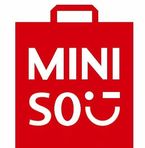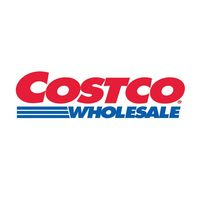Miniso's Bold Bet: A New Chapter in Retail
September 26, 2024, 9:58 pm

Location: China, Guangdong Province, Liwan District
Employees: 1001-5000
Founded date: 2013
Total raised: $145.58M
In the world of retail, change is the only constant. Miniso, a budget lifestyle brand, is making waves with its recent acquisition of a 29.4% stake in Yonghui Superstores. This move, valued at RMB 6.27 billion (USD 877.8 million), positions Miniso as the largest shareholder in Yonghui, a chain that operates around 850 supermarkets across China. But what does this mean for both companies and the broader retail landscape?
Miniso was founded in 2013 by Ye Guofu, a visionary who believed in the power of physical stores. While e-commerce was on the rise, Ye chose to invest in brick-and-mortar locations. His goal? To create a “Chinese version of Costco.” He admired Costco’s model, which emphasizes bulk buying and low prices. However, Miniso’s journey has not been without challenges. Ye faced numerous rejections from mall operators, but he persisted, driven by a larger vision.
The acquisition of Yonghui Superstores is a significant step toward that vision. Ye sees Yonghui as a vehicle to secure prime retail locations and improve lease terms, similar to how Zara has propelled growth for its parent company, Inditex. Yet, the market's reaction has been lukewarm. Following the announcement, Miniso’s stock prices fell in both the US and Hong Kong markets, raising eyebrows among investors. They questioned the wisdom of investing heavily in a traditional supermarket chain.
Yonghui has had its share of struggles. Once a leader in the retail sector, it has faced increasing competition from rivals like Freshippo. The company has experimented with various formats, but many initiatives have faltered. In 2021, Yonghui recorded its first loss since going public, accumulating over RMB 8 billion (USD 1.1 billion) in losses from 2021 to 2023. The first half of 2024 saw a 10.11% drop in revenue, forcing the closure of 136 stores.
Despite these challenges, Ye remains optimistic. He believes that Yonghui is at a turning point. His confidence stems from observing successful store revamps inspired by Pangdonglai, a smaller supermarket chain that has thrived by focusing on quality and customer experience. After visiting a remodeled Yonghui store, Ye saw potential for growth. Daily sales surged, and plans are in place to replicate this success in ten more cities.
However, not everyone shares Ye's enthusiasm. Some investors view Yonghui as a burden rather than an asset. The sellers involved in the transaction, including JD.com and DFI Retail Group, have reduced their stakes, indicating a lack of confidence in Yonghui’s future. Critics argue that while Miniso secured a favorable price, its stake comes with limited control. Both companies share a common investor, Tencent, raising concerns about market stability.
The heart of the matter lies in the differing business models of Miniso and Yonghui. Miniso specializes in affordable lifestyle products, while Yonghui focuses on fresh produce and grocery items. This disparity raises questions about how the two can effectively collaborate. Miniso’s expertise in IP-driven products could enhance Yonghui’s offerings, but the integration of their distinct product categories will require careful navigation.
Ye envisions a future where Miniso can leverage Yonghui’s strengths to optimize supply chain efficiencies. The potential for synergy exists, particularly in distribution channels. Miniso’s national supply chain network is robust, and as its overseas business continues to grow, tapping into Yonghui’s resources could open new avenues for expansion.
Yet, challenges remain. For Miniso to successfully transition from household goods to fresh food, it may need to slow its rapid product turnover. While Miniso refreshes over 20% of its product lines annually, established retailers like Costco refresh only 5-10%. This difference in pace could prove unsustainable for a large supermarket like Yonghui.
The road ahead is uncertain. Ye has outlined ambitious plans to open 900 to 1,100 stores annually from 2024 to 2028, aiming to surpass 10,000 stores by 2027. But will this growth translate into profitability for Yonghui? The success of the partnership hinges on whether Miniso can adapt its strategies to fit Yonghui’s model while maintaining its identity.
In the end, Miniso’s bold bet on Yonghui could reshape the retail landscape in China. The collaboration may bring fresh ideas and revitalization to a struggling supermarket chain. But as with any gamble, the outcome remains to be seen. Retail is a game of patience, strategy, and timing. Only time will tell if Miniso’s investment will pay off or if it will become another cautionary tale in the ever-evolving world of retail.
As the dust settles, one thing is clear: the stakes are high, and the potential for transformation is immense. Miniso’s journey is just beginning, and the retail world will be watching closely.
Miniso was founded in 2013 by Ye Guofu, a visionary who believed in the power of physical stores. While e-commerce was on the rise, Ye chose to invest in brick-and-mortar locations. His goal? To create a “Chinese version of Costco.” He admired Costco’s model, which emphasizes bulk buying and low prices. However, Miniso’s journey has not been without challenges. Ye faced numerous rejections from mall operators, but he persisted, driven by a larger vision.
The acquisition of Yonghui Superstores is a significant step toward that vision. Ye sees Yonghui as a vehicle to secure prime retail locations and improve lease terms, similar to how Zara has propelled growth for its parent company, Inditex. Yet, the market's reaction has been lukewarm. Following the announcement, Miniso’s stock prices fell in both the US and Hong Kong markets, raising eyebrows among investors. They questioned the wisdom of investing heavily in a traditional supermarket chain.
Yonghui has had its share of struggles. Once a leader in the retail sector, it has faced increasing competition from rivals like Freshippo. The company has experimented with various formats, but many initiatives have faltered. In 2021, Yonghui recorded its first loss since going public, accumulating over RMB 8 billion (USD 1.1 billion) in losses from 2021 to 2023. The first half of 2024 saw a 10.11% drop in revenue, forcing the closure of 136 stores.
Despite these challenges, Ye remains optimistic. He believes that Yonghui is at a turning point. His confidence stems from observing successful store revamps inspired by Pangdonglai, a smaller supermarket chain that has thrived by focusing on quality and customer experience. After visiting a remodeled Yonghui store, Ye saw potential for growth. Daily sales surged, and plans are in place to replicate this success in ten more cities.
However, not everyone shares Ye's enthusiasm. Some investors view Yonghui as a burden rather than an asset. The sellers involved in the transaction, including JD.com and DFI Retail Group, have reduced their stakes, indicating a lack of confidence in Yonghui’s future. Critics argue that while Miniso secured a favorable price, its stake comes with limited control. Both companies share a common investor, Tencent, raising concerns about market stability.
The heart of the matter lies in the differing business models of Miniso and Yonghui. Miniso specializes in affordable lifestyle products, while Yonghui focuses on fresh produce and grocery items. This disparity raises questions about how the two can effectively collaborate. Miniso’s expertise in IP-driven products could enhance Yonghui’s offerings, but the integration of their distinct product categories will require careful navigation.
Ye envisions a future where Miniso can leverage Yonghui’s strengths to optimize supply chain efficiencies. The potential for synergy exists, particularly in distribution channels. Miniso’s national supply chain network is robust, and as its overseas business continues to grow, tapping into Yonghui’s resources could open new avenues for expansion.
Yet, challenges remain. For Miniso to successfully transition from household goods to fresh food, it may need to slow its rapid product turnover. While Miniso refreshes over 20% of its product lines annually, established retailers like Costco refresh only 5-10%. This difference in pace could prove unsustainable for a large supermarket like Yonghui.
The road ahead is uncertain. Ye has outlined ambitious plans to open 900 to 1,100 stores annually from 2024 to 2028, aiming to surpass 10,000 stores by 2027. But will this growth translate into profitability for Yonghui? The success of the partnership hinges on whether Miniso can adapt its strategies to fit Yonghui’s model while maintaining its identity.
In the end, Miniso’s bold bet on Yonghui could reshape the retail landscape in China. The collaboration may bring fresh ideas and revitalization to a struggling supermarket chain. But as with any gamble, the outcome remains to be seen. Retail is a game of patience, strategy, and timing. Only time will tell if Miniso’s investment will pay off or if it will become another cautionary tale in the ever-evolving world of retail.
As the dust settles, one thing is clear: the stakes are high, and the potential for transformation is immense. Miniso’s journey is just beginning, and the retail world will be watching closely.


